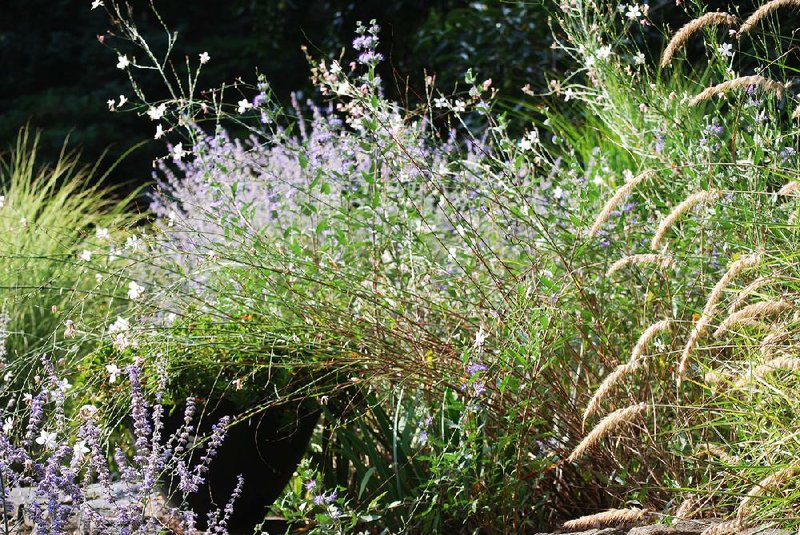Before the recent heat wave, the prevailing narrative among weather watchers was that the summer of 2014 was oddly cool.
Certain statistics and observations sort of bear this out. I read that some early apple varieties ripened precociously. Pumpkins have turned orange, believing, like the apples, that we had gone straight from July to September.
There were evenings when I might have donned a cotton sweater, unusual in late summer, but that was about the closest I could come to the idea that this summer had given us a break.
I'm convinced that people who thought we got off lightly hadn't spent enough time in the garden. I baked for three hours transplanting parsnip seedlings one afternoon, an exercise that eventually left the wee parsnips dead and the gardener deadlike. The Sunday before last -- hot, windy, muggy -- was like standing in front of an enormous hair dryer.
As bad as this was, it was nothing compared with the weather crisis facing gardeners west of the Rockies. The West has been gripped by a drought that is forcing a lot of rethinking about what constitutes a garden.
To have a patch of grass is one thing, but the default landscape of the irrigated wall-to-wall lawn would seem a foolish waste of resources and money, yet that eastward model persists in too many Western yards.
Most of the West has been abnormally dry for the past 15 years, and California is now gripped statewide by drought, officially. Almost 60 percent of the state is suffering from extreme drought. Not surprisingly, mandatory water restrictions are in effect, and some climate experts believe the West to be in the type of prolonged, multi-year aridity known as a megadrought.
At the very least, this should make folks think more about the value of water and to plan for the next period of dryness that will inevitably affect us.
The reality of gardening is that we are visited by periods of flood and by periods of drought, and in some years, the shift from one to the other can be surprisingly abrupt.
So in this season of lawn and yard work, it might be worth considering the two garden forms that have emerged to deal with these extremes, that is, the rain garden and the dry garden. Both can exist with validity on the same property -- the rain garden close to downspouts, driveways and other places where stormwater is disgorged at rates too great for normal garden beds to accept.
The approach is to devise ways to trap water and hold it long enough to soak slowly into the subsoil.
Perhaps it is the prospect of the West's drought that has me thinking more about a dry garden.
Here's the rub: Say in a year or two we find ourselves in a prolonged and agonizing dry spell. It's too late at that point to scramble to replace the shriveled hostas and hydrangeas.
The plants that endure drought generally are the thick-skinned succulents, or those that can develop the long drinking straws known as tap roots. The latter, in particular, need a growing season or two under their belts to develop their vital structure.
The other consideration is that you cannot stick dry-loving plants in heavy clay that happens to be momentarily parched. In time, the soil will get wet again, and this will kill the drought-tolerant plants, especially during winter dormancy. No, you have to excavate all that heavy top soil and mix it liberally with gravel and sand (one part of each) before you can put it all back again. This is heavy work, but rewarding and enduring, and it doesn't have to be done in one mad dash. You could convert a candidate bed over two or three weekends.
...
One of the most beautifully planted and instructive dry gardens remains the Gravel Garden at Chanticleer Garden in Wayne, Pa. Here a whole hillside has been converted into a series of landings through a sea of perennials, herbs and grasses. Dry gardens come into their own in late summer. At Chanticleer that has meant a September when the feather reed grass is a rich wheat color against the repeated drifts of the purple aster variety called October Skies. These are just two of dozens of herbaceous plants that carry special appeal in late season, including the wispy grass called nassella, goldenrods, other asters, yuccas, salvias and perhaps some lingering hardy ice plant varieties.
The other great aspect of the dry garden is that bulbs love it; they get the baking they need during summer dormancy to flourish and multiply. This mimics the conditions of their arid, upland habitats of Asia Minor.
Small bulbs such as miniature daffodils, species tulips, muscari, crocuses and snowdrops will outdo themselves in this environment and provide color early in the season, when most of the dry garden inhabitants are rubbing the sand from their eyes.
While you're building the dry garden, set aside some time to order and plant bulbs.
HomeStyle on 09/27/2014

